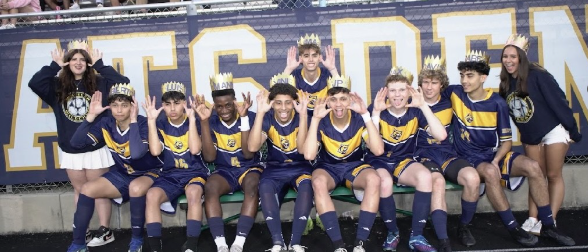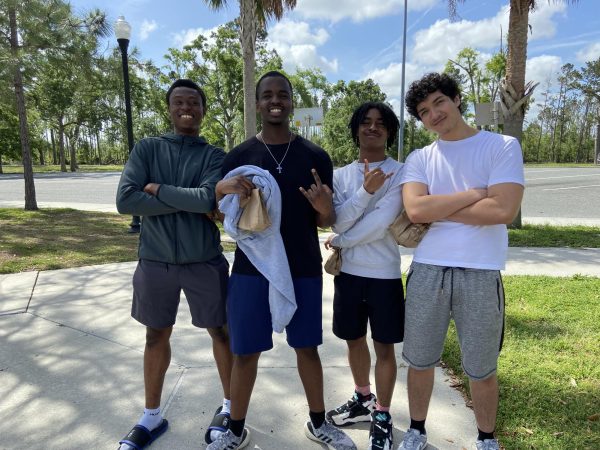AVID at Wheeler
Wheeler High School now offers a class for people who strive for success and are determined to be great academically.AVID will provide students with strategies and skills that no other class can. AVID, the college readiness programs primary focus is student success. The purpose of AVID is to help students succeed in life and, school, especially in college. AVID teaches students how to collaborate and work in groups of people big, and small. This helps with social skills that may be needed later in life and also in throughout their school career. Not only can students learn necessary collaboration skills, but also skills that can help them succeed in class on their own.
AVID was founded by Mary Catherine Swanson in 1980 with the goal of helping high school students graduate and move on to college. The collaborative, family-like environment in the classroom created a space for success to thrive and grow amongst the students. AVID helped students succeed in rigorous classes as a result of the support, and study skills. AVID has grown from helping 32 students to assist students in more than 5,000 schools in 44 states and 16 countries/territories.
AVID stands for advancement via individual determination, which means that it takes students are determined and want to achieve success and help them advance academically. AVID is for students who are willing to learn. In AVID students learn study strategies and tools that they can utilize in all of their classes beyond High School and college. These strategies attribute to many different aspects of a student, including body language, organization, and homework and study completion.
Some strategies include SLANT, Cornell notes, tutorial request forms (TRF’s), Binder checks, Costas questions, and other helpful procedures. A professor at Cornell University created Cornell notes because he noticed that most of the students in the class were failing. He analyzed their note-taking strategies and created Cornell notes, which involves folding the left-hand side of the paper down by one-fourth of the paper. The small left-hand side of the paper is used for questions about the notes, and the right-hand side is for taking notes. The heading of the notes should include a higher level essential question that refers to the topic of the notes, a title, and the student’s name and date at the top right-hand corner of the paper. After the notes have been completed, the student should that night mark the text, or highlight circle and comment on the critical points discussed in the notes, fill out higher level Costas questions, as well as complete a summary that answers the higher level questions. Costas questions are higher-level questions that require higher-level thinking. The questions are not yes or no questions, but instead ask the “who, what, when, where, why, and how” questions. The questions should start with higher-level words; these words are divided into three levels, questions that begin with words like “what” are lower level questions (level 1). Questions that start with words like “explain” are about midlevel questions (level 2). Questions that begin with words like “distinguish” are higher level questions (level 3). Students are encouraged to use higher-level questions. These questions are used for TRF’s, Cornell notes, and many more times. Tutorial request forms or TRF’s help students understand points of confusion they may experience in classes. The TRF sheet is organized to help students break down and analyze difficult topics. After this form has been filled out with a point of confusion, the student will bring in to class and get into a group of no more than about seven students. The group is organized in a horseshoe-like shape so that collaboration is more comfortable. The student will then present the problem, and other students will work together asking a question to help the student understand. The form requires a broad essential question, two questions to guide the tutorial group in discussion, two parts of the topic they know, a blank space to work out the problem until the point of confusion, an area to write down the process, and space to write the detailed point of confusion problem. SLANT is a helpful strategy used in class to help keep the student actively involved and learning. SLANT stands for; Sit up, Lean forward, Ask questions, Nod your head, and Talk to the teacher. This strategy shows a teacher that the student is listening and engaged in the activity, and represents proper body language. Binder checks help students keep all aspects of their binder organized. Each student is required to have a three-inch binder that holds all of the needed supplies for all classes. These are a few of the strategies.
In the class, students get to attend college field trips. The field trips allow students to expand their knowledge about college and learn what the requirements are and how to meet them. Students get to ask all questions they have about college to help them decide what they are looking for and which college is a good fit for them. Apart from the field trip, they also learn about college in class, and the different ways to get in, or how to apply. In some classes the students’ research colleges that they are interested in. This allows them to set their goals and expectations for themselves.
AVID overall encourages students success and allows students to thrive in whatever they choose to do. The strategies provided help students succeed in and out of school. Many have shown progress and have improved as students and leaders thanks to the AVID goal.



